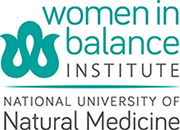 Last May, Angelina Jolie brought to the world’s attention the ‘breast cancer gene’ when the New York Times published her op ed, “My Medical Choice.” This essay made public her decision to undergo prophylactic bilateral mastectomy to prevent breast cancer, following the discovery that she carries the ‘faulty’ BRCA1 genetic mutation. Jolie’s own mother passed away of ovarian cancer at 56 years old, and her maternal aunt passed away of ovarian cancer just three days after Jolie’s article went to press. Both women carried the BRCA1 mutation, which predisposes women to both breast and ovarian cancer, among other malignancies.
Last May, Angelina Jolie brought to the world’s attention the ‘breast cancer gene’ when the New York Times published her op ed, “My Medical Choice.” This essay made public her decision to undergo prophylactic bilateral mastectomy to prevent breast cancer, following the discovery that she carries the ‘faulty’ BRCA1 genetic mutation. Jolie’s own mother passed away of ovarian cancer at 56 years old, and her maternal aunt passed away of ovarian cancer just three days after Jolie’s article went to press. Both women carried the BRCA1 mutation, which predisposes women to both breast and ovarian cancer, among other malignancies.
What exactly is the ‘breast cancer gene’?
BRCA1 and BRCA2 are types of tumor suppressing genes, meaning that they protect the body from growing cancer cells. Hereditary defects in these genes are passed from a person’s mother or father and can inhibit the ability to prevent certain types of cancer. Many different types of mutations of these genes are possible, and while some may be completely harmless, others are much more dangerous and significantly increase a woman’s chance of developing certain types of cancers.
How likely is it that a woman who carries a BRCA mutation will develop cancer?
Breast Cancer:
While the average woman has a 12% chance of developing breast cancer in her lifetime, a woman who carries a harmful BRCA1 mutation has a 55-65% chance of developing breast cancer by age 70, and a woman with a harmful BRCA2 mutation has a 11-17% chance of developing breast cancer.
Ovarian Cancer:
About 1.4% of all women will develop ovarian cancer in their lifetime, about 39% of women with a BRCA1 mutation will develop ovarian cancer by age 70, and about 11-17% of women with a BRCA2 mutation will develop ovarian cancer.
Other types of cancer:
BRCA1 and BRCA2 mutations also increase the risk of developing fallopian tube cancer, peritoneal cancer, and pancreatic cancer in women.
It is important to understand that these are very generalized risk estimates, and that each woman’s individualized risk will be affected by other factors such as the specific mutation she carries, family history, how many children she has given birth to (women with less children have greater risk), and other potential risk factors. In Jolie’s article, she stated that her doctors estimated that she had an 87% chance of developing breast cancer and a 50% chance of developing ovarian cancer based on her individual risk factors.
Are men affected by the BRCA1 or BRCA2 mutation?
Yes. Men who carry these genetic mutations may pass these on to their children. They are also at a higher risk for developing breast cancer, prostate cancer, and pancreatic cancer.
Who is at risk for carrying BRCA mutations?
People who have had multiple family members with breast or ovarian cancer are more likely to carry BRCA1 or BRCA2 mutations. This is especially true if these cancers were diagnosed at an early age, if any males in the family have had breast cancer, or if a family member has had multiple cases of these primary cancers (versus multiple cases of metastasis). People of Ashkenazi Jewish heritage, and people from the Netherlands, Iceland, and Sweden, are also more likely to be carriers.
How can you find out if you carry the ‘breast cancer gene’?
Genetic testing is available to detect BRCA1 and BRCA2 mutations. These DNA tests can either look for specific mutations (if a patient knows that a family member is a carrier of a certain mutation)or can test for all possible mutations. A saliva or blood sample is sent into a lab with results returned in about one month.
Who should be tested?
BRCA1 and BRCA2 mutations are actually quite rare, and testing can be expensive and may not be covered by insurance; therefore, testing should be reserved for those who are considered at high risk for carrying the mutation. If you think you are at high risk, talk to your doctor to find out if you should consider genetic counseling to discuss possible testing.
What should you do if you test positive for BRCA1 or BRCA2 mutations?
Women who are found to be carriers of harmful mutations should talk to their doctor to discuss ways that they can decrease their chance of developing cancer throughout their lifetimes. There are many options available including more frequent screenings (clinical breast exams and mammograms), prophylactic surgeries (mastectomy and removal of ovaries and fallopian tubes), and medication such as Tamoxifen. There are also various diet and lifestyle changes, natural supplements, and herbs that can decrease a person’s risk. Each of these options carry their own potential health risks and benefits and should be thoroughly researched and discussed with a physician prior to making any decisions.
If you do find out you are a carrier, it is important to know that your genes are not your destiny. There are many resources available to help you navigate this process, and many well-informed physicians who can provide guidance.
Written by Niki Rarig, NCNM Naturopathic Medicine Program. Edited by Dr. Elise Schroeder.

